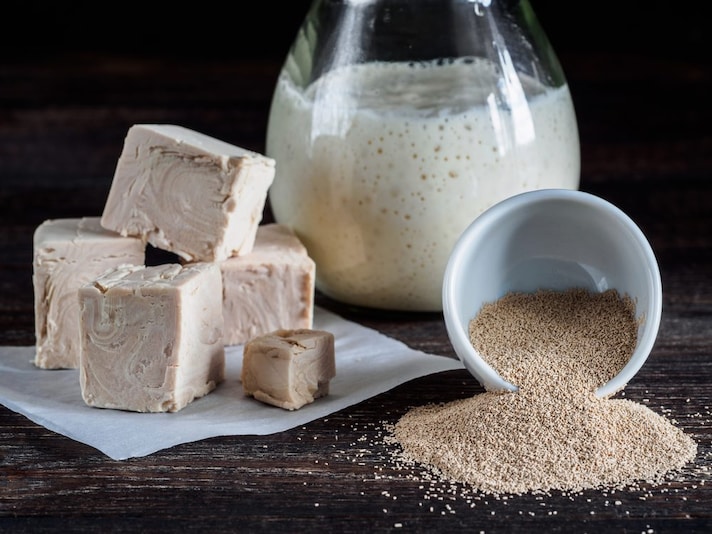
The preparation of a leavened dough requires various attentions: from the choice of flour to that of yeast, through the control of temperatures. When we talk about fresh and dry brewer's yeast we refer to a leavening agent composed of Saccharomyces cerevisiae, microscopic unicellular fungi, therefore living, from which we will have a type of microbiological leavening, like that which occurs using sourdough.
Brewer's yeast is suitable for medium-long leavening, where the microorganisms develop carbon dioxide through their fermentation, giving crunchiness and alveolation, excellent for pizza or in bread making. What is the best way to include brewer's yeast in the dough?
Brewer's Yeast: Water or Flour?
The answer is not univocal, but it depends on the form of brewer's yeast you want to use.
- Fresh brewer's yeast: it comes in the form of a block, to be stored in the refrigerator. In general, it is recommended to previously dissolve it in a little warm water (it must not exceed 105°F/40°C) taken from the total quantity indicated in the recipe. This is a procedure that is not obligatory (the fresh yeast is already active and can be added directly as it is very soluble by crumbling it with your hands), but it is useful in order to incorporate it more easily, in a homogeneous way.
- Dry brewer's yeast: this is the dehydrated version of the previous one, which is found in sachets. It is usually used by immediately inserting it into the flour together with the sugar, so as to reactivate it when kneading, but it can be dissolved in a little warm water and then poured in with the other ingredients. Another alternative is to put it in water and sugar (always taken from those needed for the preparation), mix with a teaspoon until you obtain a sort of dense and foamy cream and let it rest covered with a cloth for about 10-15 minutes, so as to maximize the activation before inserting it into the dough.

What Happens if The Yeast is Not Dissolved Before Adding it To The Dough?
Dissolving brewer's yeast before adding it to the dough is not an action that alone is binding for the final result. As we have seen, it is a step that is performed with fresh brewer's yeast to facilitate kneading, especially when it involves carrying out the action by hand and you are not an expert. Instead, for dry brewer's yeast, rehydration is one of the methods to speed up activation compared to when you add it immediately to the flour. Various brands of dry brewer's yeast indicate on the packaging the most effective way to use it.
;Resize,width=767;)
